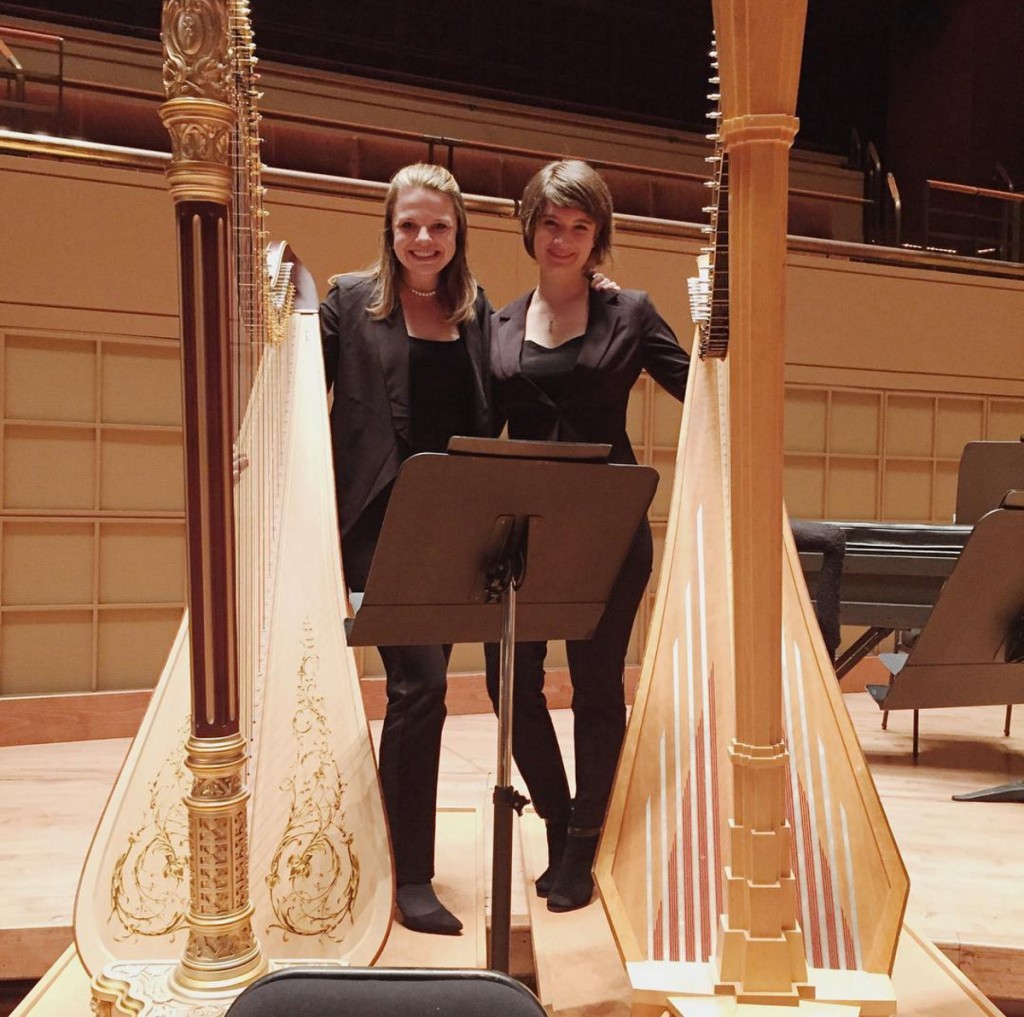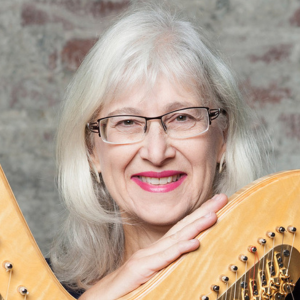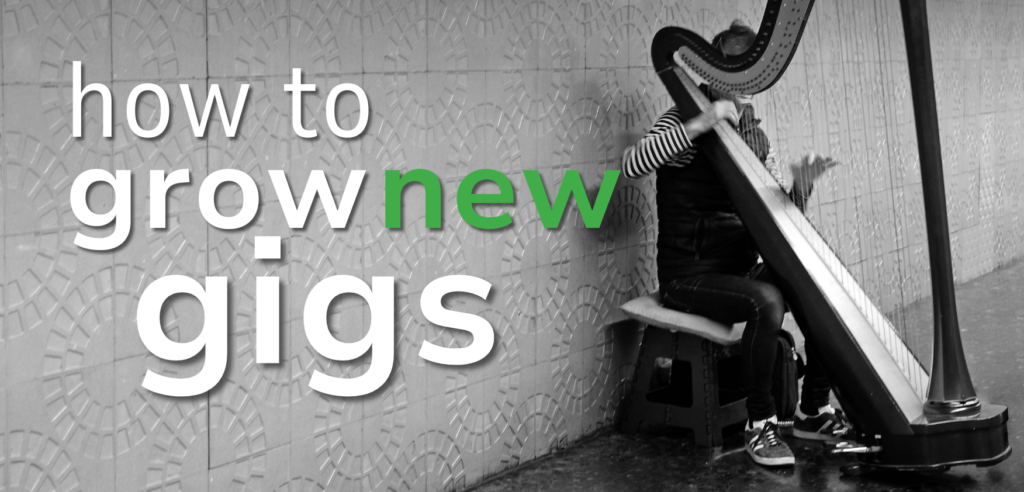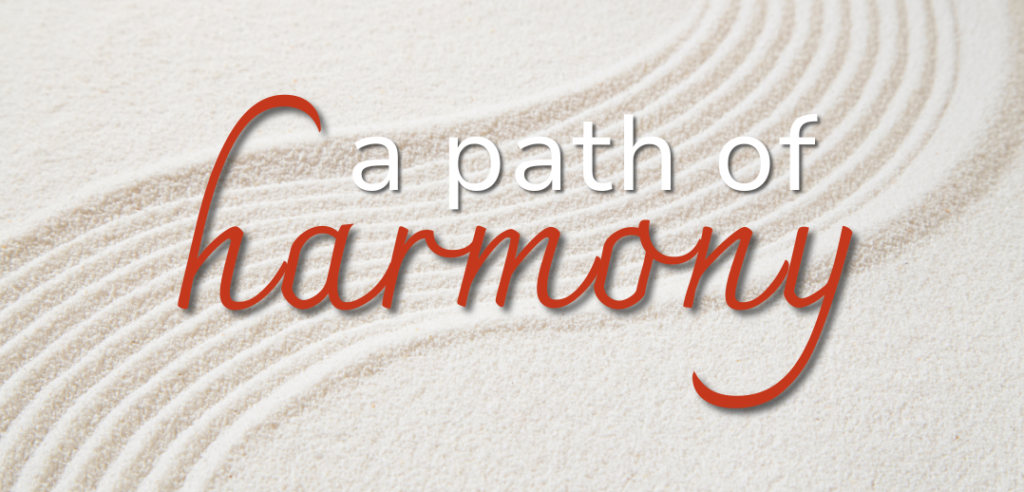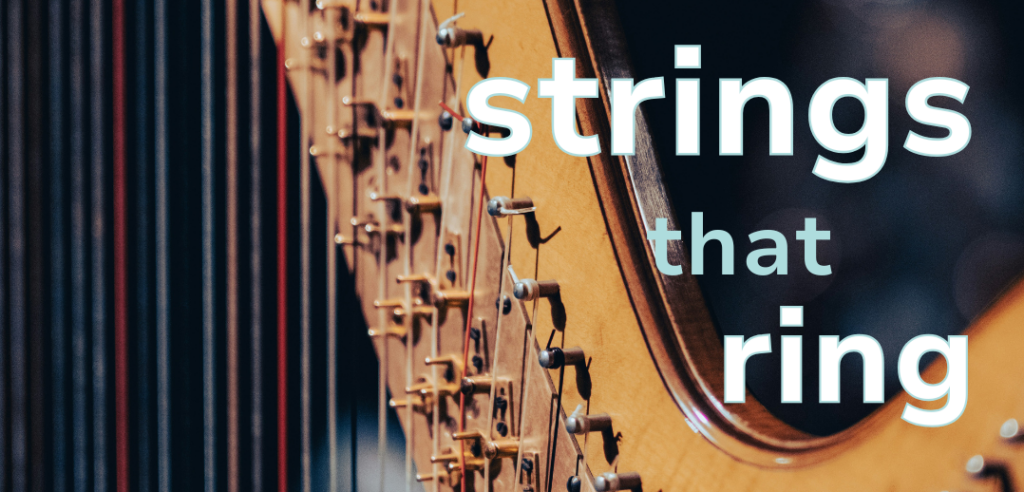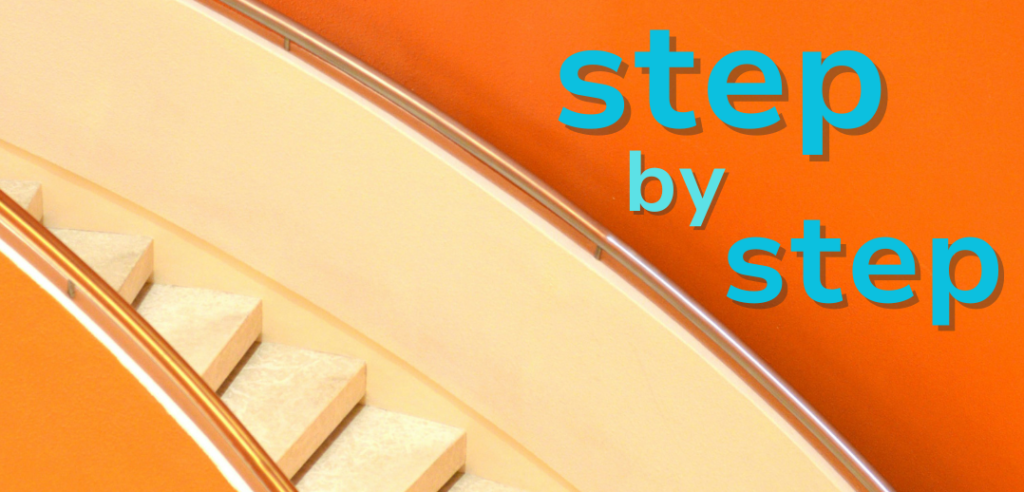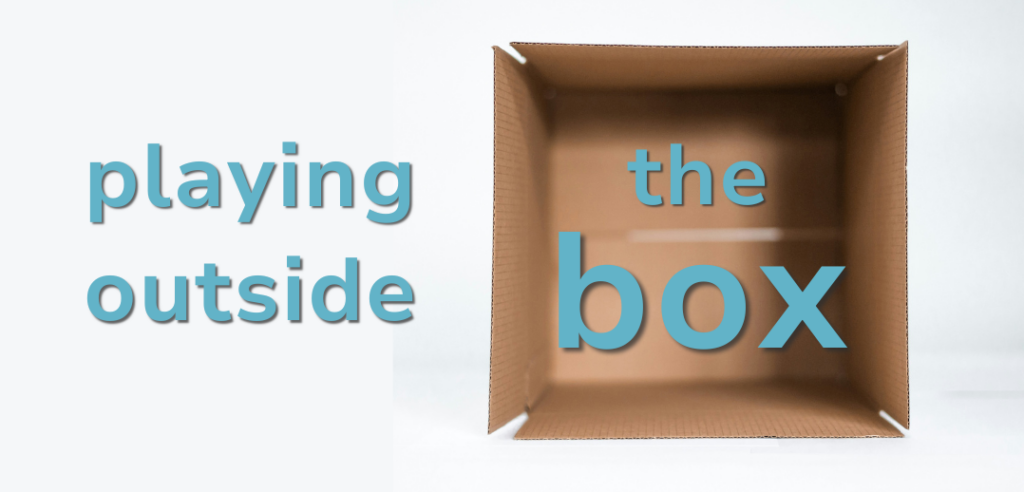Playing in an orchestra tends to be a solitary experience for harpists. Most orchestral pieces call for just one harp, and the lone harpist sits on an island tucked in between the strings and the percussion. The harp doesn’t really fit into a family of instruments. Sure the string and percussion families will claim loose family ties with the harp, but in reality, the harp is an instrument without a family and without a section with which to play.
Most of the orchestral experience harpists get is as the lone harpist in the ensemble; playing in a section of harpists in an orchestra is a rarity. Harpists spend most of their time alone in practice studios, drilling scales, arpeggios, etudes, and solos, being released for the occasional solo part in orchestra.
Play well with others
Jump to our list of pieces that use large harp sections.
It can be a shock to have to fit in with a whole section of harps when you are used to being a lone wolf. This is why it is not only fun, but useful, to play in harp ensembles and chamber groups to gain experience playing with others. It is also helpful to play another single-line instrument to get more time playing in sections. Wind and string musicians not only have to phrase, breathe, or draw their bows together, but they have to constantly adjust their tuning to the principal player—these are all valuable skills for solo-minded harpists to practice.
It is necessary to train your ears to listen to what other people are doing around you, and fit in your part as precisely and musically as possible. Take inspiration from the corps de ballet of the Bolshoi Ballet, with their rows of white-tutu’d swans in perfect alignment, not an arm out of place. The essence of a good ensemble performance is seamlessness. It should sound like the music is being made by a collective consciousness.
Preparation
Before the downbeat of the first rehearsal with a section of harps, there are some important steps both the principal harp and the section harps can take to help the collective performance.
Principal harp: Let the section players know to which A the orchestra tunes. The harps should not be more sharp or flat than the celesta, piano, and mallet instruments. At the Vancouver Symphony Orchestra (VSO), where I play principal harp, we tune to A-441.
If possible, look at all the parts and the score in advance, and mark in any cues necessary and some suggested fingerings.
Joan Raeburn Holland, harp instructor at the Interlochen Academy and the University of Michigan says, “It is ideal to have the same or similar fingerings if the parts are doubled.” The fingerings must be comfortable for all the players, taking into account the differences in hands and arms. Try not to change fingerings too close to the first rehearsal.
Mark in where the harp plays solo or is doubled. Cues should be marked into the other parts as well as yours. If the parts are to be edited or split, the principal harpist should try to get those changes into the part before that. Make sure everyone gets the marked part at least two weeks before the first rehearsal.
If the section players are nervous or inexperienced, coach the section in advance of the first rehearsal. Let them know all the pitfalls to watch out for, such as tempo changes, mistakes in the part, sudden changes in dynamics, etc.
Practice the part with a metronome to make sure your tempos are accurate, and then play them a few clicks faster than marked, in case the conductor pushes the tempo. Make sure the other harpists are prepared for this scenario as well. Have everyone listen to the recordings, if they exist, and look at the score if there is access to it. Take advantage of the online resources available on sites such as IMSLP, YouTube, and the New York Philharmonic online archives.
Communicate instrument logistics with the other harpists ahead of time. Let the other harpists know if there is an extra harp at the venue that they can use. “If there is a protocol for bringing harps into the theater with regard to timing or location load-in, sharing these details will help put your extra harpists at ease,” says Chicago Lyric Opera principal harpist Marguerite Lynn Williams.
Section harpists: Let the stage manager know in advance if you need help loading the harp into the venue, and when you plan to arrive. Call a day ahead; it makes it easier for them to plan. If there are multiple harps coming in, it may be necessary to have scheduled loading times.
Find out what the dress code is for that orchestra. Buy or borrow any items that are not already in your closet. Check that the shoes work for the pedals, and that your outfit’s hem or sleeves don’t interfere with the pedals or get in the way of your harmonics. Dismay may cause unparliamentary language, which even uttered sotto voce, is not allowed in the middle of a concert.
Take inventory of your string bag and make sure that you have replacement strings for each note of your harp, plus wire cutters, a couple of lead pencils with erasers, a screwdriver, extra tuning wrench, tuner, a pick-up for your tuner, extra batteries, and anything else an emergency may require.
Ask if you need to bring your own chair. The orchestra may own adjustable chairs with backs, which are preferable in a long piece such as a Mahler symphony. The audience will be distracted if they see you squirming with back pain, halfway through a piece.
Make sure you have a good pick-up for your tuner that attaches to an inside rib of your harp. When there is a lot of noise around you, your tuner will not be able to separate your harp notes from the French horns without a proper pick-up. Your tuner should be able to pick-up the entire range of the harp even on a noisy stage.
Ready for rehearsal
Get to the venue at least an hour early if you have to unload and park. The most important thing is to have enough time to tune the harp—you need to be not only in tune with the orchestra, but with your fellow section members. Leave time to get lost. Leave time for the stage crew to set up your harp without having to re-set the stage. Never arrive late. “Late” means arriving less than a half hour beforehand. If you are really early, get set up and tuned, then get a cup of coffee and a donut and pat yourself on the back!
The principal harpist should tell the section if he or she likes to tune alone, and, if so, when they will be tuning. If all the harpists have good tuners and pickups, it should be fine if they all tune at the same time. In the VSO, usually the second harpist has finished tuning before I get there. Always tune in flats, but check the notes in naturals and sharps, especially if there are exposed notes.
“Be sensitive to others’ tuning,” advises Williams. “Some may be bothered by someone else warming up while they are still tuning, and others don’t mind at all.”
If you are using a chair from the venue, check that it is adjusted for the harmonics to speak when you play in your normal position.
Bring your prepared string bag, and possibly a stand lamp if the venue doesn’t supply them and the light onstage is inadequate. If you bring a water bottle, ask if it is allowed onstage in rehearsal. If it is, be very careful not to knock it over, and always keep the lid on so it cannot spill.
Before starting any part of the piece, double-check that your pedals are correctly set. This may seem like a no-brainer, but this is an easy mistake to make. Write pedal diagrams clearly and unambiguously in every possible starting spot in the parts. It should be obvious which staff they are attached to, and they should be placed squarely to the music, not slanted off to one side. Pedals should be pre-set in the tacet bars whenever possible.
Don’t go offstage during rehearsal during a movement that requires harp, even if they are working on the strings’ parts interminably. It makes a very bad impression to miss an entrance because you were chatting backstage. Never read a book, knit, or text while rehearsing onstage. It is too distracting, and could cause you to miss your cue. The personnel director will notice, and you could end up at the bottom of the hiring list next time. Conductors also hate to see this; it seems disrespectful. Trust me; I found out the hard way. Luckily, I had tenure.
There are different preferences about whether the section harpists should sit on the left or the right of the principal harpist. The principal will make this decision. The main thing is that the harpists should be close enough to hear each other and have an unobstructed view of the conductor. The lighting should be good for all the harpists. The principal harpist should be an advocate for the section, if they are placed in a black hole. Some diplomatic education of the stage crew may be necessary, perhaps encouraged by some homemade muffins or cookies.
Everyone should arrive at the first rehearsal with all the notes learned and be prepared to play faster or slower than the marked tempos. Stay engaged and alert at all times. Sometimes the conductor will choose to jump from one spot to the next, or do the movements out of sequence. Any questions for the conductor should be asked by the principal harpist.
Be aware that sometimes there are movements with no harp, marked tacet. We have all done this at least once: you have the harp on your shoulder, ready to play, and then you realize there’s nothing for you in that movement. Also note that some movements have false endings. A good example is the first movement of Symphonie Fantastique by Berlioz. You get all psyched up to play “Un Bal,” but the first movement isn’t over yet! It’s pretty embarrassing to have to put the harp down without having played a note.
Performance etiquette
Unless otherwise specified in the dress code, assume that you wear a formal long black dress, skirt, or pants, long sleeves on top and formal black shoes with black stockings if you are a woman, and a tuxedo with tails and formal black shoes and socks if you are a man. Some pops shows have different dress codes, such as white jackets or white tops.
All the problems should have been sorted out in rehearsal, and the section should feel completely confident of all the entrances and tempos. They should know how the entire piece sounds and where their part fits in.
Before the concert, everyone should check their set up and lighting in case anything has changed since the rehearsal. Sometimes, a harp may have been moved slightly between rehearsal and concert. Also, check that your harp is not obscuring another musician’s view of the conductor. We’re too big and cumbersome to move in the middle of a concert—the harps, that is, not the harpists.
Enjoy yourself! After all, we all went into this field because we love music, right?
How to be a good team player
Be polite, kind and constructive to each other at all times. It can be stressful enough without any drama in the section. The principal harpist should always be tactful and clear if some direction needs to be given in terms of dynamics, tempi, tuning, etc. The section harpists should not be too sensitive if there has to be a comment. Section harpists should refrain from comments like, “You say I’m rushing? Well, I say that you’re dragging!” It goes without saying that fistfights and hair-pulling are unbecoming.
Holland points out that a section of two is more vulnerable than a section of 10, and having good communication is key. “With the understanding that the principal harp is the leader and in ‘command,’ the section harpist must honor their principal’s directions,” she says. “Yet, it is also important for the principal harpist to discuss ideas with the section harpist,” noting that differences in fingerings and muffling can be discussed, along with ways to achieve certain colors and rhythmic clarity.
The section should follow the principal harp very closely, while keeping an eye on the conductor. The orchestra is a bit like the army. The principal of each section is in charge, makes the decisions, tries to keep things going smoothly, and takes the flack if things don’t go well. It is exceptionally difficult for the second harpist to stay absolutely together with the principal harpist when the part is very exposed and delicate. When you find a colleague who can do it, treat them like the treasure they are.
Sections of three or more
Most of the time, a harp section consists of two harpists. But, once in a while, the orchestra will program a piece that requires three or more harps. Sections of multiple harps became more popular after Berlioz began orchestrating in this way. Unfortunately, many orchestras don’t have the money nor the space on stage for more than one harp. Often two harp parts are combined and played by one harpist. Many times, it is impossible to combine parts without leaving out too many notes and ruining the balance or musicality of the piece. In Daniels’ 2005 edition of his book of orchestration, Der Rosenkavalier Suite is listed as having one or two harp parts, but it does need two. There is a note in the score, saying it could be done by one harp, but that must have been done to accommodate an orchestra that did not have a second harp. Holst’s The Planets must have two harpists, as another example. In both these cases, the harp parts are frequently in totally different pedal settings.
In Rimsky-Korsakov’s book Principles of Orchestration with Examples Drawn From His own Works, he writes, “Full orchestras should include three or even four harps. My operas Sadko, The Legend of the Invisible City of Kitesh, and The Golden Cockerel are designed for two harps, Mlada for three.” Berlioz wrote for three harps in his opera Les Troyens, in order to achieve triple harmonics in Act 4.
Some conductors love the sound of the harp so much that they want the parts doubled, even when not required in the orchestration. The VSO’s former music director, Sergiu Comissiona, did this occasionally, for example in Rimsky-Korsakov’s Capriccio Espagnol (excluding the cadenza), and in Ravel’s Bolero.
It would be ideal to have a sectional rehearsal, perhaps an hour before the first rehearsal starts, or after a rehearsal to cut away the wreckage. Professionals cannot be compelled to add extra rehearsal time if they are not being paid extra, so this is a more likely scenario in a student orchestra.
Advice from the pros
Christa Grix is one of several harpists that plays second harp with the Detroit Symphony Orchestra (DSO) and its principal harpist Patricia Masri-Fletcher. “Patty has been a rock-solid leader,” Grix says, “and I have learned almost everything I know about orchestral playing through sitting next to her. The overriding goal of a second [harpist] should be to make the section sound like it is one instrument. This is your first and foremost job. Leave your ego at the door—now is the time to be a team player, and the principal harpist is your quarterback. You must be ready and prepared to adapt to the ensemble.”
Grix starts preparing for a DSO concert weeks in advance—getting the harp part, listening to recordings, studying the score, and understanding how the part fits in with the principal and the rest of the ensemble. “I tend to be obsessive-compulsive about these things,” she admits, “but over the years I’ve learned the value of knowing what others around me are playing so that I can adjust to the rhythmic nuances. Music is fluid and flexible—we must have the ears and understanding of the subtleties in order to adapt to its flow.”
Grix also points out some of the ensemble nuances that she listens for, “Strings tend to come in a little after the beat, winds and percussion on top of the beat. I play often with a jazz trio, and time is so different in pop and jazz than it is in the orchestra! As a harpist, it’s important to be aware of these subtleties, and place your notes accordingly.”
Playing consistently as a section harpist has its advantages, “Over the years we have come to an understanding that in any touchy rubato and pianissimo section, like in Mahler, where our parts are doubled, I drop out on the last note or two of an arpeggio, and she will take the part so that there are no ensemble issues. In fortissimo sections that are technically difficult, we maximize our sound by dividing the part either by harp 1 taking the treble clef and harp 2 taking the bass clef, or by alternating measures.”
It’s not only important to sound as one, but also to look uniform too. “During the week of rehearsals, Patty will let me know when to pull the harp back and return it to standing position,” Grix says.
When the performances are over, Grix says she always extends her thanks to the principal harpist for inviting her to share the stage. “It is indeed a great privilege to make great music with great musicians, and I try to never forget it. Each opportunity to play with the Detroit Symphony is an opportunity for me to grow as a musician, which is why I am so grateful for my job as harp 2.”
“Actually think like a section player,” says Catherine Litaker, a professional harpist who plays with section harp with the Chicago Symphony Orchestra and the Chicago Lyric Opera Orchestra. “We, as harpists are trained to be soloists, so when put in a group setting, it is often very difficult to get all those rolled chords just right. The trombone section actually breathes together! A good section player will follow their principal, know their part inside and out, and will be on time.”
From a principal harpist’s perspective, Carolyn Mills, principal with the New Zealand Symphony Orchestra says a very important part of the second harpist’s job is to be flexible. “Sometimes in rehearsal, a conductor may ask for more sound or a faster tempo, or the orchestration may sound heavier or lighter than expected if it is an unfamiliar work,” she says. “In such cases harp 1 may ask harp 2 to double a chord, or take the bass clef of a passage, or something similar if the notes are not too difficult at short notice. Some conductors are so difficult to follow that harp 1 needs to put more attention towards looking up, and must give a few more notes to harp 2. A willing and supportive second harpist is worth gold when the situation gets tough!”
Lynn Williams adds, “One of the most important roles of a second or third or fourth harpist is to help support the principal in musical and non-musical ways. It is a treat to perform in a healthy, well-functioning harp section. Be supportive, encouraging, and certainly acknowledge a job well done! There is power in numbers; the range of a harp section is exponential.”
“When I’m leading a section, I try to be as consistent as possible,” says Dallas Symphony Orchestra principal harpist Emily Levin. “Of course you have to respond to the orchestra’s playing and be flexible and musical, but the details, especially when a part is doubled, should remain consistent—the way you roll a chord, the timing of triplets, the subdivison of lengthy arpeggios, etc. Because you have other harpists trying to follow you, keeping these small details consistent helps knit you together.”
Tutti harps
“The opportunity to play with another harp, or even six, is fantastic,” says Levin. “The experience should be enjoyed!” It may feel rather daunting at first, but there is a great sense of community when it has all gone well. The audience loves to see all those magnificent instruments together, and when they’re happy, it makes us happy. There’s nothing that feeds the soul more than a rapturous round of applause. •
THE MORE THE MERRIER
Zero or one tends to be the most common number of harp parts in
orchestral works. But here are some pieces with large harp sections:
- Berlioz: Te Deum (12 harps playing one part)
- Berlioz: Symphonie Fantastique (four harps on two parts)
- Berlioz: Les Troyens (three harps)
- Berlioz: Damnation of Faust (eight or 10 harps)
- Berlioz: Romeo et Juliette (six or eight harps)
- D’Indy: Forêt Enchantée (eight harps, two parts)
- Gagneux, Renaud: Requiem (three harps)
- Le Sueur: Ossian (1804) (two sections of six harps each)
- Mahler: Symphony No. 6 (four harps, two parts)
- Mahler: Das Klagende Lied (six harps, editors reduced to two)
- Ravel: second version of Shéhérazade (1903) (three harps)
- Rimsky-Korsakov: Mlada opera (three harps)
- Schoenberg: Gurrelieder (four harps)
- Strauss: Alpine Symphony (four harps, two parts)
- Strauss: The Legend of Joseph (four harps)
- Stravinsky: The Firebird ballet (three harps)
- Wagner: The Ring Cycle (six parts)
Some major works with two harp parts:
- Bartók: Concerto for Orchestra
- Berlioz: Symphonie Fantastique
- Bloch: Schelomo
- Chabrier: España
- Debussy: La Mer, Pélléas et Mélisande opera, Images, Prélude à l’après-midi d’un faune
- Holst: The Planets
- Strauss: Ein Heldenleben
- Ravel: Daphnis et Chloë, La Valse, Alborada del gracioso
- Verdi: La Forza del Destino
- Weber: Invitation to the Dance
Some pieces in which a single part is doubled:
- Prokofiev: Romeo and Juliet ballet
- Shostakovich: Symphony No. 5







